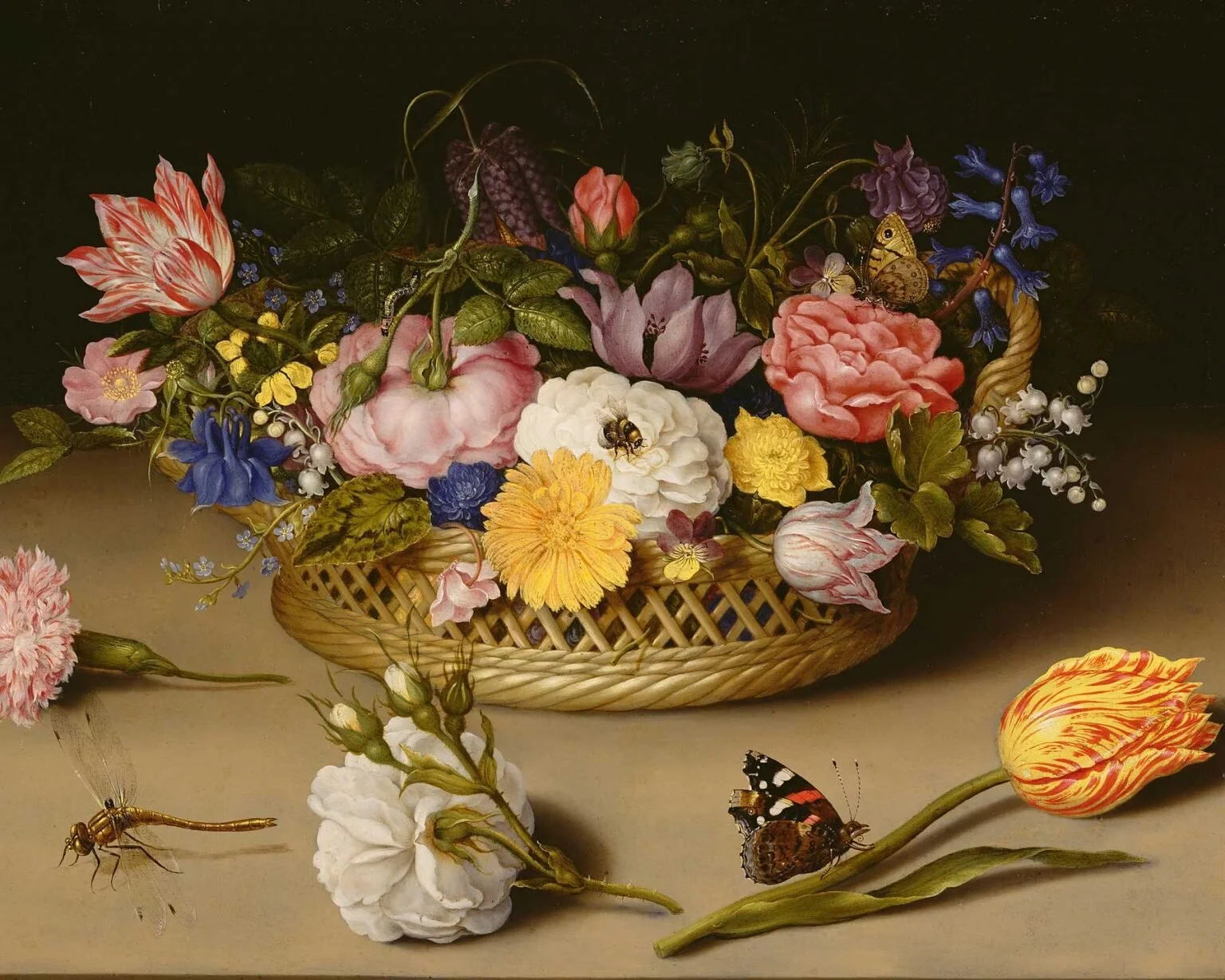We hope you enjoy this video and resource material on Spring/Early
Summer Flower Arranging and Floriography, also known as the Victorian
Language of Flowers.
Flowers and plant life have held symbolic significance in both art and
literature across cultures for thousands of years. However, Floriography in
Victorian England and the United States brought this “language” and all its
subtleties to a much broader audience and a whole new level. A particularly
popular way to use Floriography was through the creation of Tussie-Mussies
- or small, handheld bouquets. Every component of these talking bouquets
held significance from the way they were held in the hand, or offered to
another, to the ribbon color and knot which held them in place. But of
course it was the choice and composition of floral elements which were of
tantamount importance.
The meaning of an individual flower can be complex and in some
cases seemingly contradictory. For instance a lilac can symbolize the
memory of a love lost, it can also be used to indicate a new or blossoming
love interest. The other flowers which surround the lilac help “interpret” its
meaning. There are few flowers with purely negative meanings (unless they
are presented dead or damaged). Even the columbine which is most often
said to symbolize foolishness or folly can also indicate a childlike openness
and can be offered to lend courage or resolve to a newcomer. Flower
symbolism can vary by culture and may draw upon anything and
everything from ancient mythology to folkways and medicinal use.
Hundreds of resource texts were created between the mid eighteen
hundreds and the turn of the century - ranging from the scholarly to serial
newspaper columns. The primary historical reference we used was Kate
Greenaway’s The Language of Flowers which was published in 1884. A more
comprehensive list of resources consulted is to be found at the end of the
Spring and Early Summer Cut Flowers: Conditioning, Use and
Floriography reference we’ve included for you.
Luckily today’s flower arrangers need not be hampered by such strict
rules as the Victorians. To our way of thinking, it is absolutely OK to
incorporate your own history and experiences into what you want your
floral designs to “say.”
Our inspiration for the design we’re presenting in the video continues
to be our very own Ginny Noyes, whose mentorship and tirelessly patient
cheerleading buoys us through our training toward becoming GCA
certified judges in Floral Design. We wanted to create an arrangement for
her which “spoke” of our admiration and gratitude and reflected a token
sampling of her talents. You can read how we tied all the elements together
in the attached Ode to Ginny.
We’ve very much enjoyed our time with all of you as Floral Design
Chairs these past four years. We look forward to finally seeing you all in
person soon and to exploring new projects together.
Best,
Andrea and Bryn
